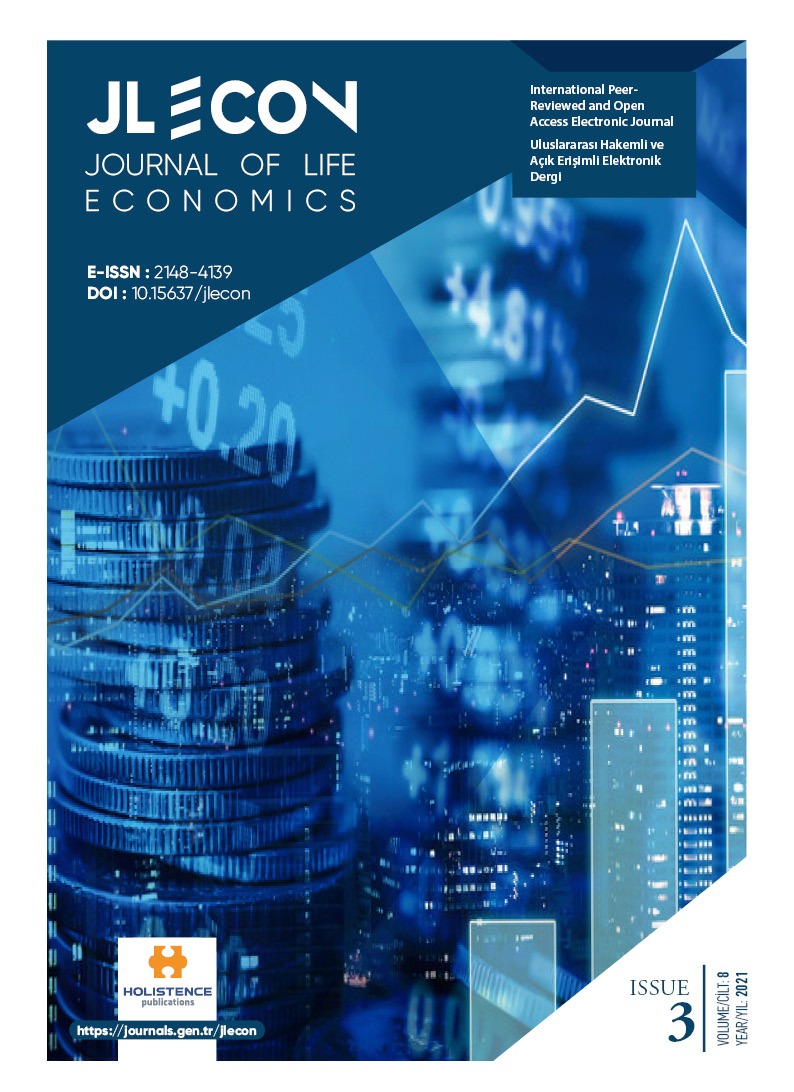Barriers to the career progression of women in banking sector in Albania. Do perceptions differ?
DOI:
https://doi.org/10.15637/jlecon.8.3.04Keywords:
women, career, glass ceiling, bankAbstract
International statistics and studies emphasise the gender imbalance in high managerial levels. According to the literature review the undereppresentation of women in high levels is related to the “Glass Ceiling” phenomenon. These are barriers that hinder the career progression of women. According to the Gender Organization Structure model, these barriers are divided into three categories: Individual, Social and Organizational. The purpose of this study is to find out how do perceptions about these barriers vary according to five demographic variables (age, marital status, education, managerial position and experience) of women at managerial levels in commercial banks in Albania. The Kruskal-Wallis test is used to test the differences in perception of barriers. The results of the study show that: women’s perceptions about individual barriers vary according only to the managerial level; women’s perceptions about social barriers vary only according to age and maritual status; women’s perceptions about organizational barriers vary only to marital status.
Downloads
References
BEST, D.L. (2004). Gender stereotypes. In: Ember, C.R. & Ember, M. (Eds) Encyclopedia of Sex and Gender: Men and Women in the World’s Cultures, Vol. I: Topics and Cultures A-K. Dordrecht: Kluwer Academic/Plenum Publishers
BURKE, R.J. & MATTIS M.C. (2005). Supporting Women’s Career Advancement Challenges and Opportunities. Edward Elgar Cheltenham, UK • Northampton, MA, USA
CARLI, L.; ALAWA, L.; LEE, W.; ZHAO, B. & KIM. E. (2016). Stereotypes About Gender And Science: Women ≠Scientists. Psychology of Women Quarterly, 40(2) 244-260, Sage, DOI: 10.1177/0361684315622645
CLEVELAND, J.N., STOCKDALE, M., & MURPHY, K.R. (Eds). (2000). Women and Men in Organizations: Gender Issues at Work. Mahwah, NJ: Lawrence Erlbaum Associates.
DAVIDSON, M.J & BURKE, R.J (2011). Women in Management Worldwide: Progress and Prospects, second edition, Gower
DERVISHI Z. (2011). Gratë në turbulencat e mendësive dhe realiteti politik, Analizë sociologjike e përfshirjes së grave në jetën politike. EMAl, Tiranë, (Women in the turbulence of mindset and political reality, sociological analysis of women's involvement in political life)
DIMOVSKI V., SKERLAVAJ M., MOK KIM MAN M. (2010). Comparative Analysis of Mid-Level Women Managers’ Perception of the Existence of “Glass Ceiling” in Singaporean and Malaysian Organizations. International Business & Economics Research Journal, 9(8), 61–77
ELAMIN A. M. & OMAIR, K. (2010). Males Attitudes Towards Working Females in Saudi Arabia. Personnel Review, 39(6), 746 – 766
FAGENSON, E. A. (1986). Women's Work Orientations: Something Old, Something New. Group and Organization Studies, 11, 75-100.
FAGENSON, E. A. (1990). Perceived Masculine and Feminine Attributes Examined As A Function of Individuals' Sex and Level in The Organizational Power Hierarchy: A Test of Four Theoretical Perspectives. Journal of Applied Psychology, 75(2), 204-211.
FAGENSON, E.A. (1993). Diversity in management: Introduction and the importance of women in management in Fagenson: Trends , Issues, and Challenges in Management Diversity, Sage Newbury Park,CA.
GUTEK, B., (1992). Women In Management: Change, Progress or An Ephemeral Phenomenon. In L.A. Heslop. The ties that bind, Ottawa, Canada: Proceeding of the Global Research Conference on Women and Management.
ILO report (2019). Women in Business and Management, The business case for change, https://www.ilo.org/wcmsp5/groups/public/---dgreports/---dcomm/---publ/documents/publication/wcms_700953.pdf (Accessed Date: 21.06.2021)
ISRAEL, G.D. (2013). ―Determining Sample Size, PEOD6 University of Florida, IFAS Extension, http://edis.ifas.ufl.edu.
JAMALI, D., SAFIEDDINE, A. & DAOUK, M. (2006). The Glass Ceiling: Some Positive Trends from The Lebanese Banking Sector. Women in Management Review, 21(8), 625-642.
KASIMATI, M.& GUSHO, A. (2010). Women In Management. Is The Albanian Way Different? Economic and Social Challenges and Problems.
KHOLIS, N. (2017). Barriers to Women´s Career Advancement in Indonesian Academia: A Qualitative Empirical Study. Advances in Social Science, Education and Humanities Research (ASSEHR), Atlantis Press, volume 66
KIRAI M.N. (2013). Barriers to Women Career Progression in Kenya’s Civil Service, phd dizertacion, http://ir.jkuat.ac.ke/bitstream/handle/123456789/1217/Nchabira,%20Margaret%20%20Kirai%E2%80%93PHD%20Human%20Resource%20Management-2013.pdf?sequence=1 (Accessed Date: 21.06.2021)
KNUSTON, B. & SCHMIDGALL, R. (1999). Dimensions of The Glass Ceiling in The Hospitality Industry. Cornell Hotel and Restaurant Administration Quarterly, 40(6).
MCDONALD, I. (2004). Women in management: a historical perspective. Employee Relations, 26(3), 307-319.
OAKLEY, J.G., (2000). Gender-based barriers to senior management positions: understanding the scarcity of female CEO’s, Journal of Business Ethics, Vol. 27, No. 4, pp. 321-34
OMAR, A. & DAVIDSON, M. J. (2001). “Women in management: A comparative cross-cultural overview. Cross Cultural Management: An International Journal, Vol. 8, No. 3/4, fq. 35-67
SCHEIN, V. E. (1975). Relationships Between Sex Role Stereotypes and Requisite Management Characteristics Among Female Managers. Journal of Applied Psychology 5789— 105.
TLAISS H. & KAUSER S. (2010). a, Perceived organizational barriers to women's career advancement in Lebanon, Gender in Management: An International Journal, 25(6).
VAN VIANEN A. E. M. (2002). Illuminating The Glass Ceiling: The Role Of Organizational Culture Preferences. Journal of Occupational and Organizational Psychology, 75(3), 315–337.
VECCHIO R. P. (2002). Leadership and Gender Advantage. The Leadership Quarterly 13(6), 643–671.
WIRTH L. (2001). Breaking through the glass ceiling: Women in Management. Geneva International Labor Office.
Downloads
Published
How to Cite
Issue
Section
License
Copyright (c) 2021 Holistence Publications

This work is licensed under a Creative Commons Attribution 4.0 International License.
When the article is accepted for publication in the Journal of Life Economics, authors transfer all copyright in the article to the Holistence Publications.The authors reserve all proprietary right other than copyright, such as patent rights.
Everyone who is listed as an author in this article should have made a substantial, direct, intellectual contribution to the work and should take public responsibility for it.
This paper contains works that have not previously published or not under consideration for publication in other journals.

















